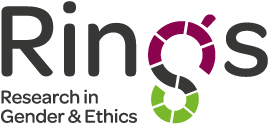Gender Analysis of Eye Health Problems in the Sundarbans, India
Worldwide, approximately 670 million people are visually impaired, among whom 269 million suffer from low vision and 45 million are blind. Nearly 90% of these people live in low- and middle-income countries (WHO 2014). With increases in life expectancy and population, the share of age-related non-communicable visual impairments within these regions continues to rise. India alone has almost 22% of the world’s visually-impaired population, while the country is home to 12.9 % of the world’s aged population. Estimates show 82% of blind people and 65% of moderate and severe blind people in India are older than 50 years of age.
Women make up approximately 64% of all blind people, partly because women live longer and partly due to their poor access to health care services. In the backdrop of decreasing economic means and erosion of family networks for women in particular and for elderly in general, aged women emerge as the ‘doubly disadvantaged’ group within society. In countries like India women often delay seeking treatment because they have limited access to
resources and time, less mobility, they do not value their health as much as that of others, and they need to be accompanied to the health facility.
This study examined the intersection of gender with age, socioeconomic status, and education to better understand visual impairment among the elderly in the Indian Sundarbans.
A quantitative survey was undertaken, starting first with eye screening of the elderly by optometrists, followed by multistage random sampling to select visually impaired individuals across 12 villages. Out of those screened, 442 (174M/268F) individuals with eye problems in either of their eyes were surveyed using structured questionnaires. Demographic information related to age, economic status, and education were also collected. Following the quantitative study, 24 (12M/12F) in-depth interviews were conducted with visually-impaired elderly men and
women from surveyed individuals. Quantitative data was analysed in STATA 11 and qualitative interviews were analysed thematically and coded using NVIVO 10.
Association of gender and age with visual impairments:
The results from this study show that age is an important determinant for developing visual impairments, and more so in case of blindness. In terms of the intersection of gender and age, the lower the age the less likely the elderly were found to develop blindness, for both men and women. However, older women were found to be more likely to develop visual impairments compared to all other categories.
Association of gender and poverty with visual impairments:
Compared to poor women, the results showed that both poor men and non-poor men are less likely to develop any kind of eye problems. Strikingly, non-poor women were more likely to develop a visual impairment than poor men. Most respondents who participated in the qualitative interactions asserted that women are more likely to have eye problems, however, when asked about financial conditions of those vulnerable to eye problems and whether visual impairments have anything to do with the financial status, the answers were varied. While some of respondents strictly linked poverty to visual impairments, many of them believed that it can affect both rich and poor people.
Association of gender and education with visual impairments:
The intersection between gender and education showed that level of education has an association with the level of
visual impairments among men only; while educated women do not appear to have better eye health compared
to uneducated women both in case of low vision and blindness. Compared to illiterate women, illiterate men were less likely to develop visual impairments, however, the result is significant only in case of blindness. In comparison to illiterate women, both literate men and women were less likely to develop low-vision or blindness, however, the result is significant only in case of literate men. This indicates that education is more of a preventative factor among men compared to women.
Conclusion
The study showed the role of gender in relation to visual impairments among the elderly of the Indian Sundarbans. It explored how gender cross cuts with other social stratifiers, such as age, education, and poverty to determine eye health status. Given the rising share of the elderly population and epidemiological transition of disease patterns more towards noncommunicable diseases, this study put forward evidence on predictors of visual impairments for policymakers, especially for those who work on eye diseases.
When gender is considered alongside age, we can see how the two intersect to influence the level of visual impairments among men and women, with older women being more at risk. When gender is considered alongside education, we can see that education is preventative among men only. And when gender cross cuts with poverty, poor men are in a better position compared to non-poor women in terms of level of developing visual impairments. That means improving economic status does not necessarily ensure better eye health status for women.
Without applying an intersectionality lens to the analysis, these distinctions would be lost. This has implications for health research, as research which only considers a single stratifier will miss different degrees of vulnerability across the groups. In terms of policy, this analysis shows that policymakers need to be more cautious when developing a blanket approach to address social issues like ageing, or health problems like visual impairments, especially if they seek to target those who are most vulnerable.
Lead researcher: Debjani Barman, Institute of Health Management Research, Kolkata, India
Find out more!
Journal article: Gendered health systems: Evidence from low- and middle-income countries
Video: Debjani talks more about the project in a short webinar presentation
Blog: Can intersectionality get us closer to Universal Health Coverage?
Documentary: Are women in the Indian Sundarbans living in the dark?
